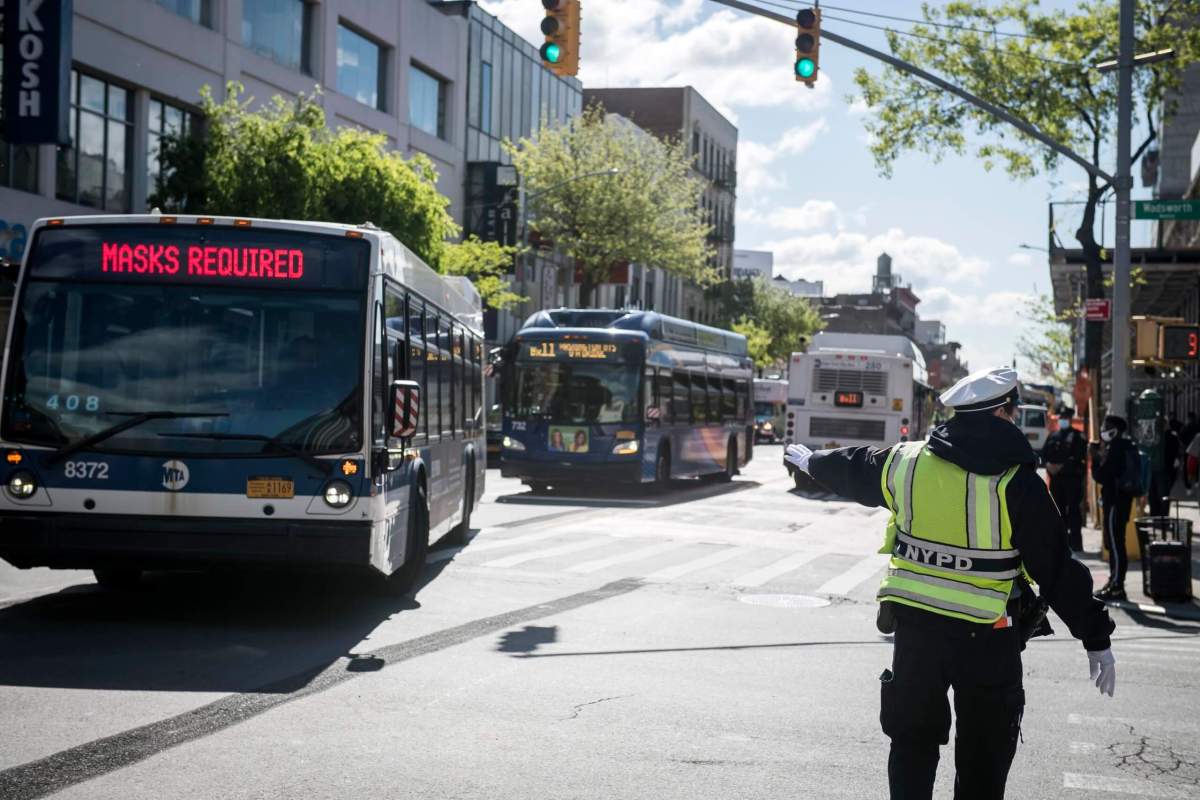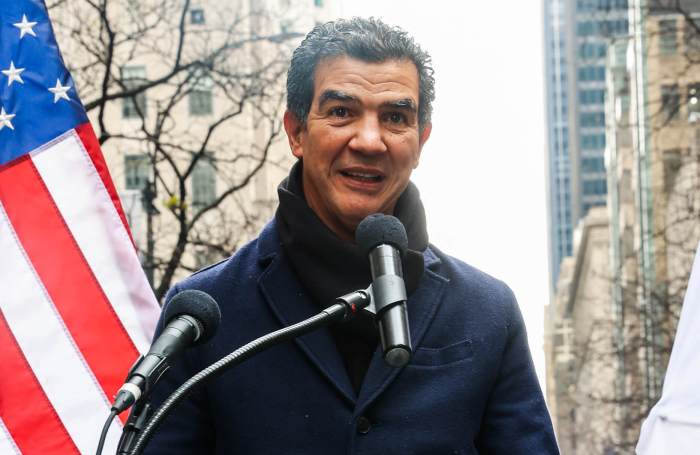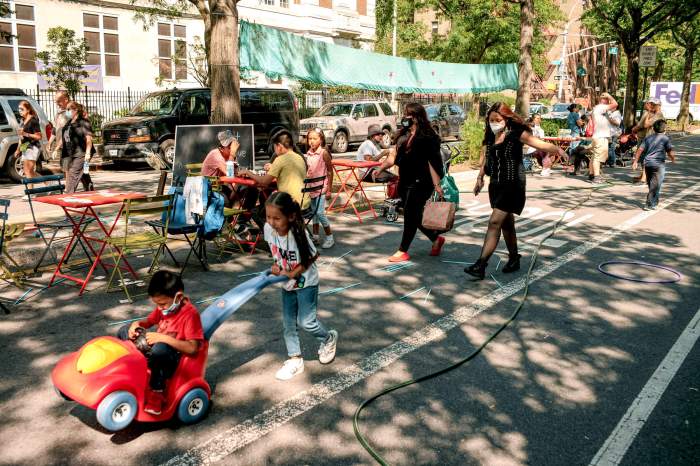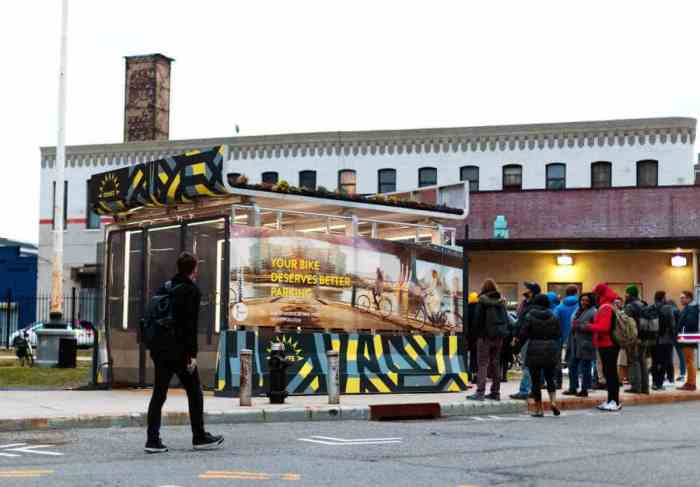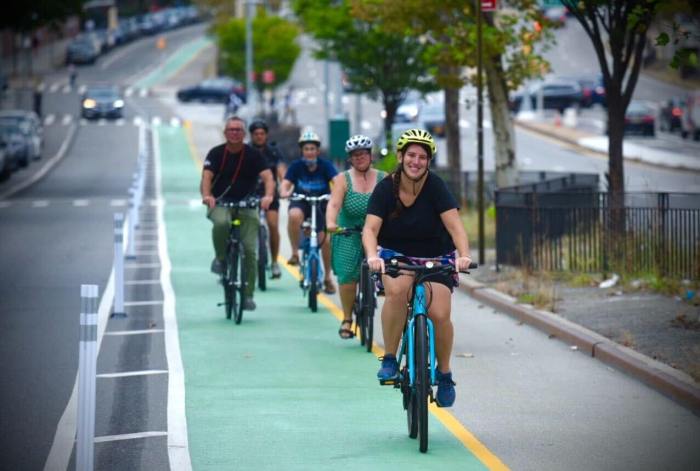The city plans to scale back the 181st Street busway in Washington Heights by two hours — the second bus-priority corridor schedule officials decided to cut under the Mayor Eric Adams administration.
Department of Transportation reps told local community groups in a June 23 presentation of their intention to shorten the busway’s active hours to 6 a.m.–8 p.m., instead of ending at 10 p.m., citing “community feedback,” while moving ahead to make the pilot project permanent.
The four-block busway between Amsterdam Avenue and Broadway bans car through traffic during those hours, seven days a week, to speed up buses and make it easier for delivery trucks to access the stretch.
Drivers can still access every block for drop-offs or short-term parking, but they must make the next right turn off of the busway.
The project consistently sped up travel times for bus commuters, who told DOT they felt service was faster and more reliable, and that the street felt safer since the changes took effect more than a year ago.
But area business owners were worried about lost parking and safety in the later hours, while also bringing up issues to local officials seemingly unrelated to the red-painted lanes.
The proposed cuts are not yet finalized and DOT will have more to share on the busway’s permanent form shortly, according to the agency.
This is the second time the city has moved to reduce a busway’s operating hour after it transitioned out of its testing phase and amid opposition from businesses.
DOT nearly cut in half the scheduled times of the Main Street busway in Flushing, Queens, from 24 hours a day to just 13 hours between 6 a.m.–7 p.m., earlier this month.
The most recently-launched busways on Archer Avenue and Jamaica Avenue in Jamaica, Queens, could get axed if the two council members representing the area get their way — among them the Council’s Transportation Committee chairperson Selvena Brooks-Powers.
“NIMBYs shouldn’t have a veto over any part of bus-priority infrastructure, no matter the time or day of week,” said Danny Pearlstein of the transit advocacy group Riders Alliance. “The mayor should stick to his guns.”
Despite busways repeatedly proving effective by speeding up New York City’s notoriously-sluggish buses, the dedicated lanes have faced red-hot opposition from local pols, business groups, and neighborhood groups.
The 14th Street busway in Manhattan and the Flushing busway were both delayed by lawsuits. The former, along with the fairly less controversial Jay Street busway in Downtown Brooklyn ,became permanent without changes under former Mayor Bill de Blasio.
However, the ex-mayor backed off of a full-scale busway on Fifth Avenue when well-heeled businesses along the ritzy midtown thoroughfare kicked up a fuss last year.
The Fifth Avenue project has been stuck in neutral ever since, and Mayor Adams didn’t even include it in his 20 miles of roadways set to get bus lane improvements this year.
In the Heights, the 181st Street busway rolled out in April 2021 aiming to speed up trips for some 68,000 average weekday riders across five MTA bus lines.
Bus passengers make up 62-70% of roadway users on 181st Street, and 69% of Washington Heights and Inwood residents don’t have access to a car, according to DOT.
Travel speeds averaged at a snail’s pace of 3.7 miles-per-hour pre-busway, but increased across all routes up to 32% during the rush hour peaks, especially heading west coming from the Bronx.
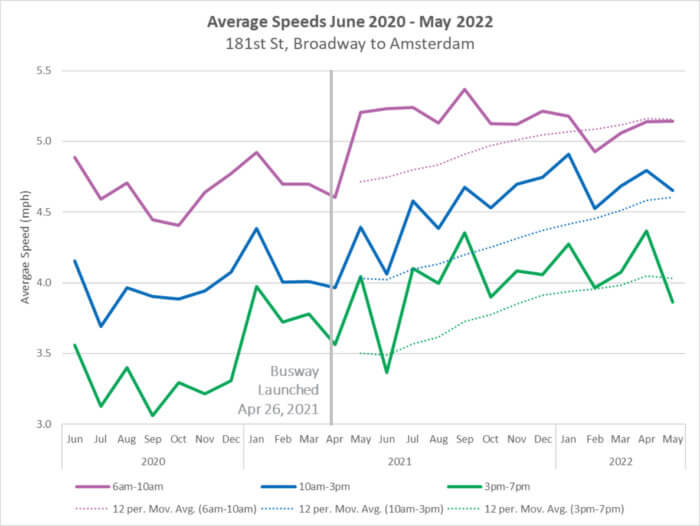
Bus service also felt more frequent for 57% and faster for 60% of the roughly 200 of bus riders DOT surveyed across four days along the stretch a year into its launch.
Only 2% of those respondents said they used a car as their typical mode of transportation, compared to 69% taking the bus, 16% the subway, and 11% who mostly walked.
The 181st Street corridor felt safer to cross as well for 55% of pedestrians overall, and 54% of seniors and people with disabilities.
DOT went out again to field concerns from local businesses a month later on May 17, flanked by the Washington Heights Business Improvement District and staffers from local Council Member Carmen De La Rosa’s office.
During that outreach session, the agency reported customers being “confused about busway regulations,” and “afraid of getting tickets.”
They also heard issues not obviously connected to the busway, such as “safety and quality of life concerns in the evening,” street vending, and disruptions caused by Con Edison work.
The agency presentation does not provide hard data on these issues as it did with rider feedback.
The Washington Heights BID and Council Member De La Rosa did not respond to requests for comment by press time.
In addition to being an area heavily reliant on mass transit, the five bus lines along 181st Street serve overwhelmingly blue collar neighborhoods uptown and in the Bronx with a high concentration of frontline jobs.
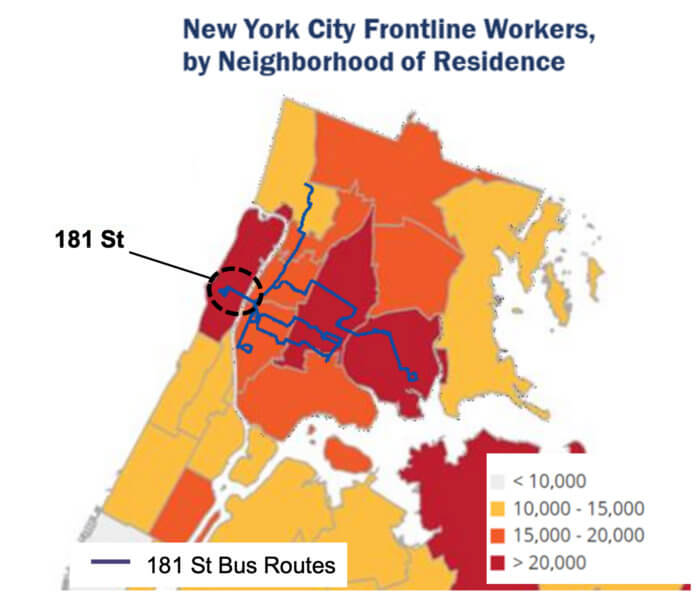
Those essential workers travel to places like NewYork-Presbyterian Columbia University hospital, and Pearlstein, of Riders Alliance, said their need to get around quickly doesn’t stop after 8 p.m.
“We don’t want those people delayed, we want to honor them and thank them for their amazing service, especially in a pandemic,” Pearlstein said.
A spokesperson for the mayor’s office said City Hall was “evaluating” the busway and said Adams was committed to expanding the city’s network of bus projects.
“Mayor Adams has put forward the most ambitious plan in the city’s history to speed up our buses, including a commitment to deliver 150 miles of new and enhanced bus lanes and busways and a critical partnership with the MTA to deliver the efficient and reliable service New Yorkers deserve. We are proud to be moving in the direction of making more piloted busways permanent,” said Charles Lutvak in a statement.
“The administration is evaluating our options for the 181st Street busway in close coordination with the community, and we will always listen to communities to provide the transportation options that fit their needs,” the spokesperson added.



